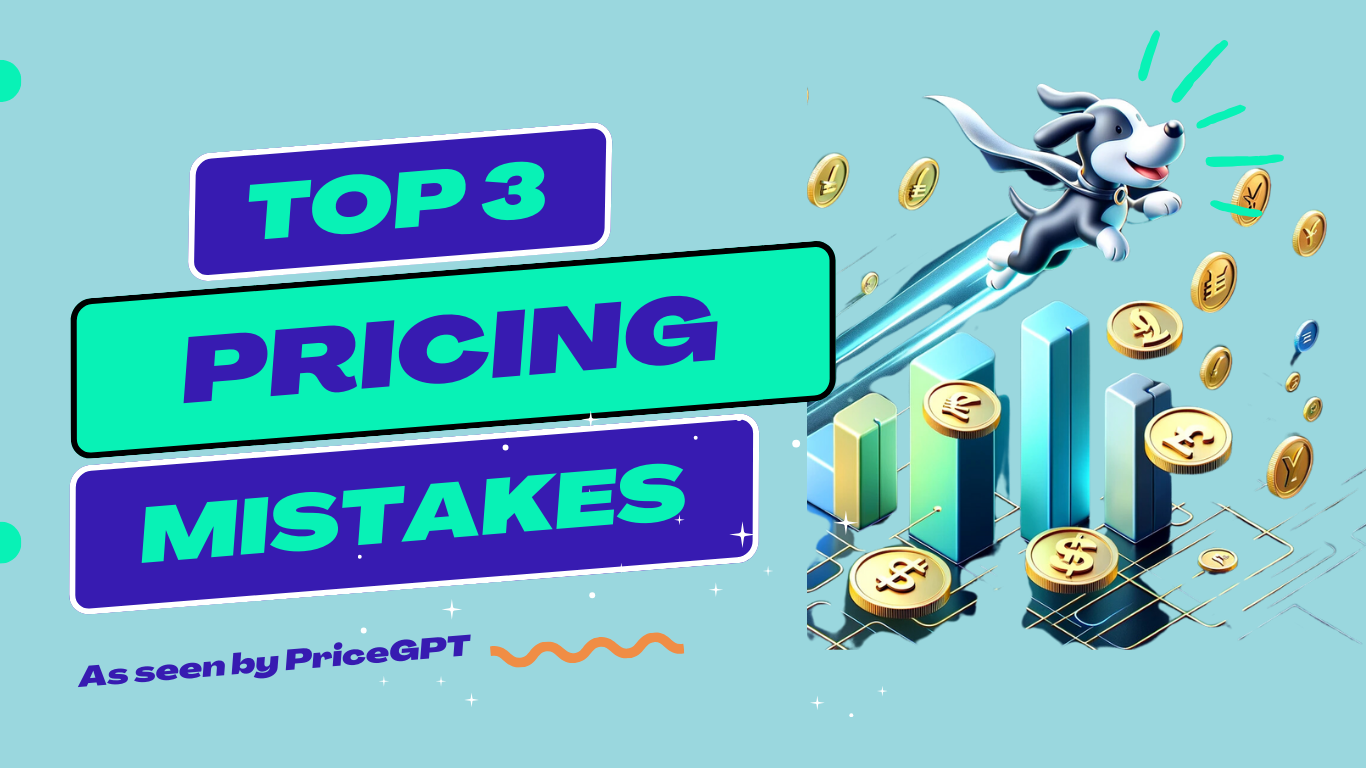We believe that AI is a democratizing force to empower companies of all sizes to make much smarter pricing decisions, especially since it can be used to collect data, recognize patterns, and identify trends on a quicker and much granular level. This is one of the main reasons why we launched PriceGPT — to make it easy for anyone even without pricing knowledge to analyze their current pricing, receive recommendations and make iterative improvements.
Since launching, we’ve received great interest with more than 2,000 pricing pages evaluated and users from more than 70 countries trying PriceGPT in less than a month.
As we continue building and improving PriceGPT, we wanted to look back at the top 3 pricing mistakes seen by PriceGPT and give you recommendations on how to address them.
Lack of a Clear Value Metric
(No. 1 mistake for 65% of pricing pages)
65% of the pricing pages audited by PriceGPT did not have a clear value metric. This risks confusing prospective customers or improperly positioning your product’s value.
A value metric is a singular measure that strongly correlates with the value that a product creates for its customers. It typically relates to how customers derive value from your product or service, such as per user or transaction.
Customers use value metrics to assess how the product scales with their usage and, subsequently, how much it will cost them. Though this can vary across customers, a good value metric aligns with the product’s core offering to its core user-base.
Here are some key principles for how to leverage value metrics for your pricing:
- Clear connection with the value the customer receives from the product
- Grows over time, with your customer’s usage of that value driving growth
- Fluctuates little, not forcing customers to upgrade/downgrade regularly
- Correlates with the willingness to pay of customers
Communicating a clear value metric that aligns with your customer’s perception of value and scales accordingly allows companies to acquire more customers and leaves room for upselling opportunities.
Ineffective Packaging Structure / Lack of Feature Differentiation
(No. 1 mistake for 42% of pricing pages)
42% of the pricing pages audited by PriceGPT either had an ineffective packaging structure or lacked feature differentiation between their product offerings or between tiers.
Software packaging involves organizing features and functionalities into distinct blocks or sets. A package is a set of capabilities within an offer (in the case of subscription products, a package refers to a set of features or capabilities within a plan), excluding the actual price.
A clear differentiation and explanation between tiers provides better audience targeting, prevents customers from getting confused about what package suits them, and casts a wider net for customer acquisition as it can target different customer segments.
Tiered packaging (one example of a packaging structure) that clearly differentiates feature sets and follows a clear ‘good, better, best’ structure that promotes an upgrade path for customers as their needs grow can work wonders. Tiered packaging or a tiered structure can effectively cater to the varying needs of different-sized businesses or use cases, allowing customers to choose from a more diverse set of options that cater to their different needs and budgets.
The objectives for an effective and successful packaging are simple:
- Alignment with the overall value
- Simple for customers to understand, ensuring a frictionless buying experience
- A clear upsell path based on customer needs and willingness to pay
- A cross-sell path for separate products or services that can complement or enhance a customer's initial purchase
Complex or Inconsistent Discount Structure / Confusing Discount Communication
(No. 1 mistake for 36% of pricing pages)
36% of the pricing pages audited by PriceGPT had a complex or inconsistent discount structure or confusing discount communication. At its core, discounting allows for differentiation of price points beyond a listed price and is commonly used by companies for various purposes — to gain market share, introduce new products, acquire customers, reactivate or reduce churn, or drive upsells.
If the pricing page shows significant price reductions or discounts, this may confuse customers about the product's actual value. Customers may also hesitate to commit if they perceive the normal price as too high, especially if they must pay at the “normal price” once the discount ends. Having inconsistent discounts for various purposes (monthly vs annual, student rates, etc.) can also make it hard to understand the true price a customer will pay.
If the pricing page shows discounts as percentage savings but lacks clarity on the actual annual price, this may discourage customers who prefer to see the exact figures upfront. Clearly stating the original and discounted prices also provides a transparent comparison for potential customers.
Since the guaranteed outcome for setting or giving out a discount is that you’re receiving less money for the same thing you originally charged more for, it’s important to get discounting right.
Looking towards the future: building PriceGPT 2.0
As we continue to evolve our work with pricing and AI, we are building around various topics:
Pattern Recognition and In-Depth Pricing Analytics
Using AI to digest and assess vast amounts of data to extract customer behavior, spending, and usage patterns.
Competitive Monitoring and Counter Measures
In-depth competitive assessments, battle cards, price comparisons, and competitor alerts to help manage an ever more saturated market.
Full Market Insights into Willingness To Pay
Insight into market shifts and their impacts on your customers. Understand how purchasing behavior may be changing before it happens.
If any of this sounds interesting, let us know! We would love to get your feedback on what we’re building.




